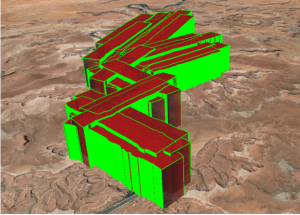By JP on Oct 28, 2015
New Lidar and Orthophotography for Utah and Colorado’s Most Scenic Rivers
This article will take 2 minutes to read
If you happen to be enjoying the Colorado, Green or Yampa Rivers late this fall and see a small plane flying back and forth, be sure to wave. You might be captured in Utah’s latest lidar acquisition.
Through a partnership with the National Park Service, the DNR’s Division of Forestry, Fire, and State Lands has contracted with Aerial Surveys International (ASI) to collect, process and deliver lidar and orthophotography data products of the main channel and floodplains of these unique and scenic rivers. The project area comprises 680 linear river miles, covering 152 sq. miles of the Colorado, Green, and Yampa River corridors in southeast and eastern Utah and northwest Colorado. These river corridors flow through portions of Arches and Canyonlands National Parks, Dinosaur National Monument, and Glen Canyon National Recreation Area. Two additional areas are also being acquired; 1) a small area in Arches NP and 2) the San Rafael River area upstream of the confluence with the Green River.
U.S. Geological Survey Quality Level 1 lidar data will be collected for the entire project area while 6-inch resolution color orthophotography will be collected for the project area within the boundaries of Canyonlands National Park. To date, ASI has completed the orthophotography collection and the lidar collection is ongoing. Delivery of the final data products is expected in early Spring 2016 after data processing and QA/QC has been completed.
Download a map of the project area.
Opportunities created by this new data include:
- improving elevation data, along the rivers, that is associated with the boundaries of state-owned sovereign lands
- better understanding of the low water morphology of the rivers for better management and navigability
- characterizing the structure and composition of riparian vegetation along the river corridors
- providing the greater community, such as recreation and science, with high resolution data
- establishing baseline high-resolution topography for fluvial geomorphic surfaces
- establishing high-resolution topography for the aprons of debris flows associated with rapids
Guest Blog by Buck Ehler, Utah Division of Forestry, Fire, and State Lands.
